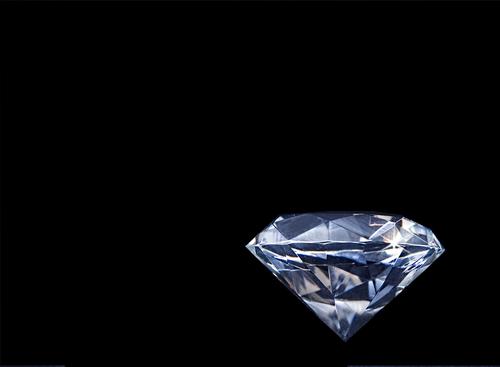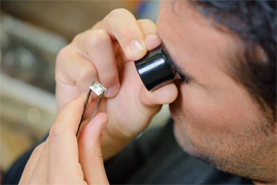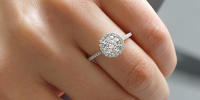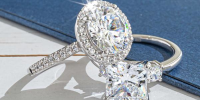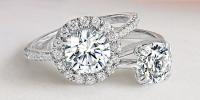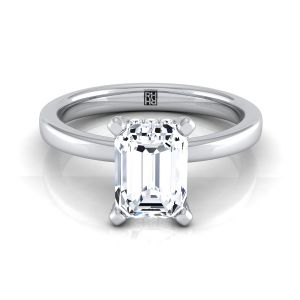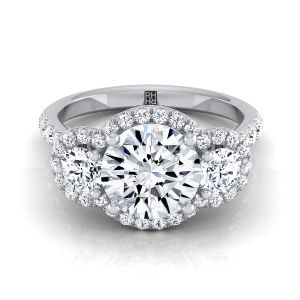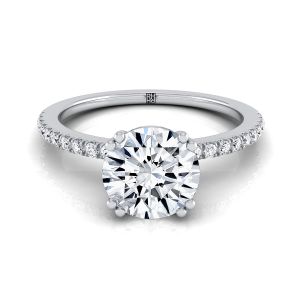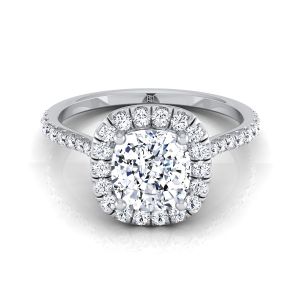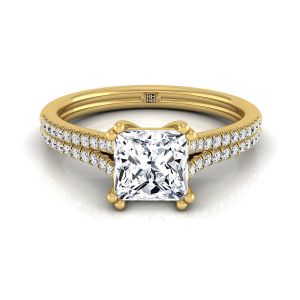
When evaluating its appearance, you have to focus on its
color,
clarity, and
cut. Yet when it comes to the structure of the
gemstone, there are plenty of chemical and physical aspects, on which faux
diamonds differ from one another. In fact, the same goes for a
diamond, so it is pointless to evaluate all of those characteristics of imitation
stone. So you should rather focus primarily on its hardness.
Color is also one of the main quality characteristics of a faux
diamond. Generally,
colorless gemstones are considered more valuable than their
colored counterparts. So, when selecting a faux
diamond, you should go for
diamond simulants with as slight
color as possible.
You can get a number of
gemstones that are very nearly colorless and can be used as
diamond imitations. They include cubic zirconia, moissanite, white
sapphire, spinel, synthetic garnet, and zircon, to name some of the most common ones. However, not all of them are perfectly colorless.
For instance, most moissanite
gems have yellowish hues, which can more or less

be noticeable depending upon the
stone. In fact, a faux canary
diamond ring is one of the popular option these days. Still, in case you wanted a whiter
diamond simulant, white
sapphire or cubic zirconia would be a relatively better choice.
 When evaluating its appearance, you have to focus on its color, clarity, and cut. Yet when it comes to the structure of the gemstone, there are plenty of chemical and physical aspects, on which faux diamonds differ from one another. In fact, the same goes for a diamond, so it is pointless to evaluate all of those characteristics of imitation stone. So you should rather focus primarily on its hardness.
Color is also one of the main quality characteristics of a faux diamond. Generally, colorless gemstones are considered more valuable than their colored counterparts. So, when selecting a faux diamond, you should go for diamond simulants with as slight color as possible.
You can get a number of gemstones that are very nearly colorless and can be used as diamond imitations. They include cubic zirconia, moissanite, white sapphire, spinel, synthetic garnet, and zircon, to name some of the most common ones. However, not all of them are perfectly colorless.
For instance, most moissanite gems have yellowish hues, which can more or less
When evaluating its appearance, you have to focus on its color, clarity, and cut. Yet when it comes to the structure of the gemstone, there are plenty of chemical and physical aspects, on which faux diamonds differ from one another. In fact, the same goes for a diamond, so it is pointless to evaluate all of those characteristics of imitation stone. So you should rather focus primarily on its hardness.
Color is also one of the main quality characteristics of a faux diamond. Generally, colorless gemstones are considered more valuable than their colored counterparts. So, when selecting a faux diamond, you should go for diamond simulants with as slight color as possible.
You can get a number of gemstones that are very nearly colorless and can be used as diamond imitations. They include cubic zirconia, moissanite, white sapphire, spinel, synthetic garnet, and zircon, to name some of the most common ones. However, not all of them are perfectly colorless.
For instance, most moissanite gems have yellowish hues, which can more or less be noticeable depending upon the stone. In fact, a faux canary diamond ring is one of the popular option these days. Still, in case you wanted a whiter diamond simulant, white sapphire or cubic zirconia would be a relatively better choice.
be noticeable depending upon the stone. In fact, a faux canary diamond ring is one of the popular option these days. Still, in case you wanted a whiter diamond simulant, white sapphire or cubic zirconia would be a relatively better choice.









